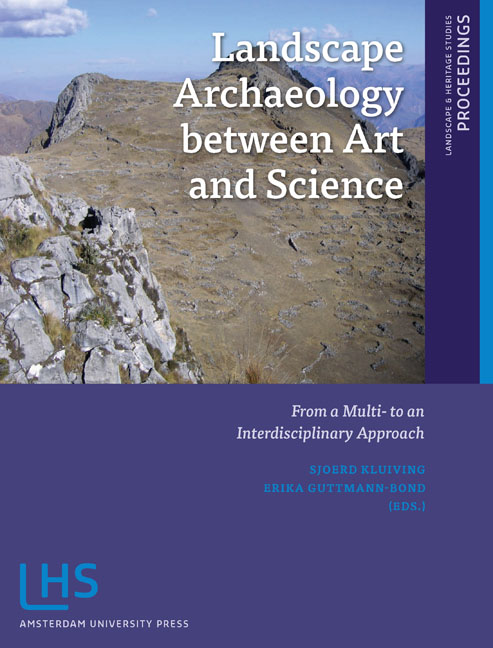Book contents
- Frontmatter
- Contents
- Preface
- Introduction: LAC2010: First International Landscape Archaeology Conference
- THEME 1 HOW DID LANDSCAPE CHANGE?
- THEME II IMPROVING TEMPORAL, CHRONOLOGICAL AND TRANSFORMATIONAL FRAMEWORKS
- THEME III LINKING LANDSCAPES OF LOWLANDS TO MOUNTAINOUS AREAS
- THEME IV APPLYING CONCEPTS OF SCALE
- THEME V NEW DIRECTIONS IN DIGITAL PROSPECTION AND MODELLING TECHNIQUES
- THEME VI HOW WILL LANDSCAPE ARCHAEOLOGY DEVELOP IN THE FUTURE?
- Miscellaneous Endmatter
5.9 - Radiography of a Townscape. Understanding, and Managing a Roman Townsite
Published online by Cambridge University Press: 21 January 2021
- Frontmatter
- Contents
- Preface
- Introduction: LAC2010: First International Landscape Archaeology Conference
- THEME 1 HOW DID LANDSCAPE CHANGE?
- THEME II IMPROVING TEMPORAL, CHRONOLOGICAL AND TRANSFORMATIONAL FRAMEWORKS
- THEME III LINKING LANDSCAPES OF LOWLANDS TO MOUNTAINOUS AREAS
- THEME IV APPLYING CONCEPTS OF SCALE
- THEME V NEW DIRECTIONS IN DIGITAL PROSPECTION AND MODELLING TECHNIQUES
- THEME VI HOW WILL LANDSCAPE ARCHAEOLOGY DEVELOP IN THE FUTURE?
- Miscellaneous Endmatter
Summary
INTRODUCTION
In spring 2009, a European project, short-named ‘Radio-Past’, was launched within the FP7 Marie Curie framework ‘Industry-Academia Partnerships and Pathways’. The project, fully titled ‘Radiography of the past, integrated non-destructive approaches to understand and valorise complex archaeological sites’, aims to join different resources and skills to improve, refine and validate intensive archaeological surveys on complex sites, with a special focus on abandoned ancient urban sites in the Mediterranean. A consortium of seven partners merges academic institutions – University of Évora (P), Ghent University (B), University of Ljubljana (Sl) and the British School at Rome (UK), with private companies: 7Reasons Media Agency (A), Past2Present (NL) and Eastern Atlas (D) – to fulfil the objectives of the programme. Its general European-scale aims can be summarised as follows: ‘to open and foster dynamic pathways between public research organisations and commercial enterprises’ and ‘to stimulate inter-sector mobility and increase knowledge sharing through joint research partnerships in longer term co-operation programmes between organisations from Academia and Industry’.
The Radio-Past project seeks to integrate different methodologies in the widely developed field of non-destructive survey technologies as applied to archaeology, and also to pursue validation of the results through innovative methods of visualisation and the development of strategies for efficient management of the cultural heritage sites studied. It is a main target of this project to allow multiplication of methods and research approaches, and to generate methodological guidelines for archaeological diagnostics. The idea is to develop a standard set of survey approaches, based on a series of already widely used as well as more innovative methods, such as active low-altitude aerial photography, geophysical prospection, Li- DAR survey and geomorphological observations, which can in the future be efficiently used in a comparable and integrated way on a wide range of complex sites in Europe. Practically, this work should result in a guide of good practice for many researchers in survey archaeology, which considers with care the suite of survey approaches that are most appropriate for the nature of each site in question.
- Type
- Chapter
- Information
- Landscape Archaeology between Art and ScienceFrom a Multi- to an Interdisciplinary Approach, pp. 429 - 442Publisher: Amsterdam University PressPrint publication year: 2012
- 1
- Cited by



